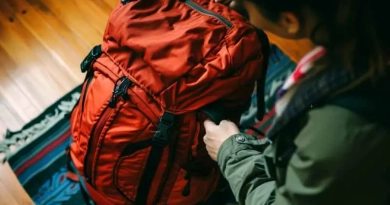
How Do I Find Public Hunting Lands?
The thrill of the hunt calls to many, but finding accessible and legal hunting grounds can be a challenge. This guide aims to navigate that challenge, offering a roadmap to discovering public hunting lands across the United States.
Finding public hunting lands involves a mix of research, tools, and sometimes, a bit of luck. Public hunting lands are those owned collectively by the public and managed by government agencies. These lands offer accessible hunting opportunities, but knowing where and how to find them is crucial.
I remember my early days of hunting, driving for hours in search of public land, often coming up empty-handed or, worse, inadvertently trespassing on private property. Over the years, I discovered that the key to successful hunting is not just in the chase but in the preparation and knowledge of the land.
Exploring the Options and Navigating Obstacles
The journey to finding public hunting lands can be as intricate as the hunt itself. Here are some critical aspects to consider:
- Online Mapping Tools: Modern technology offers a wealth of tools to help locate public hunting lands. Apps like onX Hunt provide detailed maps showing public and private land boundaries, game management units, and access points. These tools often include offline capabilities, ensuring you stay on course even without cell service.
- Government Resources: Websites like the U.S. Fish & Wildlife Service and the Bureau of Land Management (BLM) offer interactive maps and comprehensive information about public lands. These resources highlight areas under the control of federal, state, and local agencies, each with its own set of regulations.
- Local Knowledge and Clubs: Joining local hunting clubs and forums can provide insider information on public hunting spots. Experienced hunters in these groups often share knowledge about lesser-known areas and offer advice on navigating public lands.
- Regulations and Restrictions: Public hunting lands come with a variety of regulations that can differ significantly between federal, state, and local areas. Understanding these rules is crucial to ensuring you hunt legally and ethically. These regulations include licensing, seasons, weapon restrictions, and bag limits.
The obstacles can be numerous. Inadequate knowledge of regulations, difficulty accessing remote areas, and competition from other hunters can all impede your hunting experience. Overcoming these obstacles requires thorough research, proper planning, and respect for both the land and fellow hunters.
Implementing the Best Solution: A Step-by-Step Guide
After navigating the challenges, here’s a detailed guide on how to find and utilize public hunting lands effectively:
- Utilize mapping tools:
- onX Hunt: This app provides extensive maps (www.onxmaps.com) showing public and private land boundaries, access points, and game management units. It also allows you to save maps for offline use, ensuring you always know where you stand.
- Google Earth: Use this tool to view satellite imagery and topographic maps. Historic imagery can help you understand seasonal changes in vegetation and landscape, aiding in scouting potential hunting spots.
- Government and State Resources:
- U.S. Fish & Wildlife Service: This website offers interactive maps and detailed information about national wildlife refuges and other public lands (www.fws.gov).
- .
- BLM Public Lands Access GIS: This resource provides data on easements and access routes to BLM-managed lands, helping you navigate through private lands legally to reach public areas (www.blm.gov).
- Engage with local hunting communities:
- Hunting Clubs and Forums: Join local clubs and participate in forums to gain insights from seasoned hunters. They can offer advice on the best spots and share valuable tips on accessing and hunting public lands.
- State Wildlife Agencies: Check your state’s Department of Natural Resources or equivalent agency for specific information about public hunting lands, including maps, regulations, and seasonal updates.
- Plan Your Hunts and Understand Regulations:
- Scout the Area: Before the season begins, spend time scouting your hunting area. Look for signs of game activity and familiarize yourself with the terrain.
- Check Regulations: Each public hunting area has specific rules. Ensure you understand and follow all regulations regarding licensing, hunting seasons, weapon restrictions, and bag limits.
- Equip yourself properly.
- Essential Gear: Depending on the terrain and game, ensure you have the right gear, including appropriate footwear, navigation tools (GPS, maps), and survival items.
- Safety Measures: Wear blaze orange clothing to ensure visibility to other hunters and carry first-aid supplies.
Essential Resources and Tools
To implement these practices effectively, several resources and tools are indispensable:
- onX Hunt: Provides detailed public and private land maps, game management units, and offline capabilities.
- Google Earth: Offers satellite imagery and topographic maps for scouting and planning.
- U.S. Fish & Wildlife Service and BLM Websites: Provide comprehensive information and interactive maps of public lands.
- Local Hunting Clubs and Forums: Offer insider knowledge and community support.
- State Wildlife Agency Websites: Provide specific information about public hunting lands, regulations, and seasonal updates.
Conclusion: Embracing the Hunt
As the sun set over the horizon, painting the sky in hues of orange and pink, I reflected on the journey that led me to this moment. Finding public hunting lands is not just about locating a spot on a map; it’s about preparation, respect for the land, and a deep connection with nature. The thrill of the hunt is heightened when you know you’ve done your homework and are hunting ethically and legally.
For those standing at the threshold of this journey, remember: finding public hunting lands requires patience, research, and respect. Embrace the process, learn from each experience, and let the wilderness guide you. The land holds many secrets, and with each hunt, we come closer to understanding the wild and our place within it.






